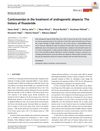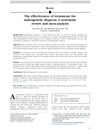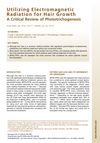Can We Halt Male Androgenetic Alopecia Progression Without Antiandrogenic Drugs?
December 2019
in “
Dermatologic Therapy
”

TLDR Only anti-androgenic drugs likely halt AGA progression.
This article discusses the effectiveness of treatments for androgenetic alopecia (AGA), a progressive condition that worsens if no treatment is implemented. According to a recent meta-analysis of randomized controlled trials, finasteride, minoxidil, and low-level laser light therapy (LLLT) are the only treatments with demonstrated efficacy for male-pattern hair loss. However, most AGA studies have a short follow-up period that ranges from 4 to 12 months. Therefore, we cannot ascertain the effectiveness of these treatments at halting the long-term progression of AGA. The authors propose two categories of AGA treatment: miniaturization evolution modifying anti-androgenic drugs (MEMADs) and non-miniaturization evolution modifying anti-androgenic drugs (non-MEMADs). The treatments that modify miniaturization evolution can improve, stabilize, or slow down AGA progression. The treatments that do not modify miniaturization evolution will increase hair count and hair diameter and maintain this benefit for a limited time period; however, these treatments will not change the progression of AGA. Long-term clinical studies are the gold standard for evaluating and classifying each treatment. Based on the mechanism of action and sparse clinical evidence, it is more likely that only anti-androgenic drugs can halt the progression of AGA.














